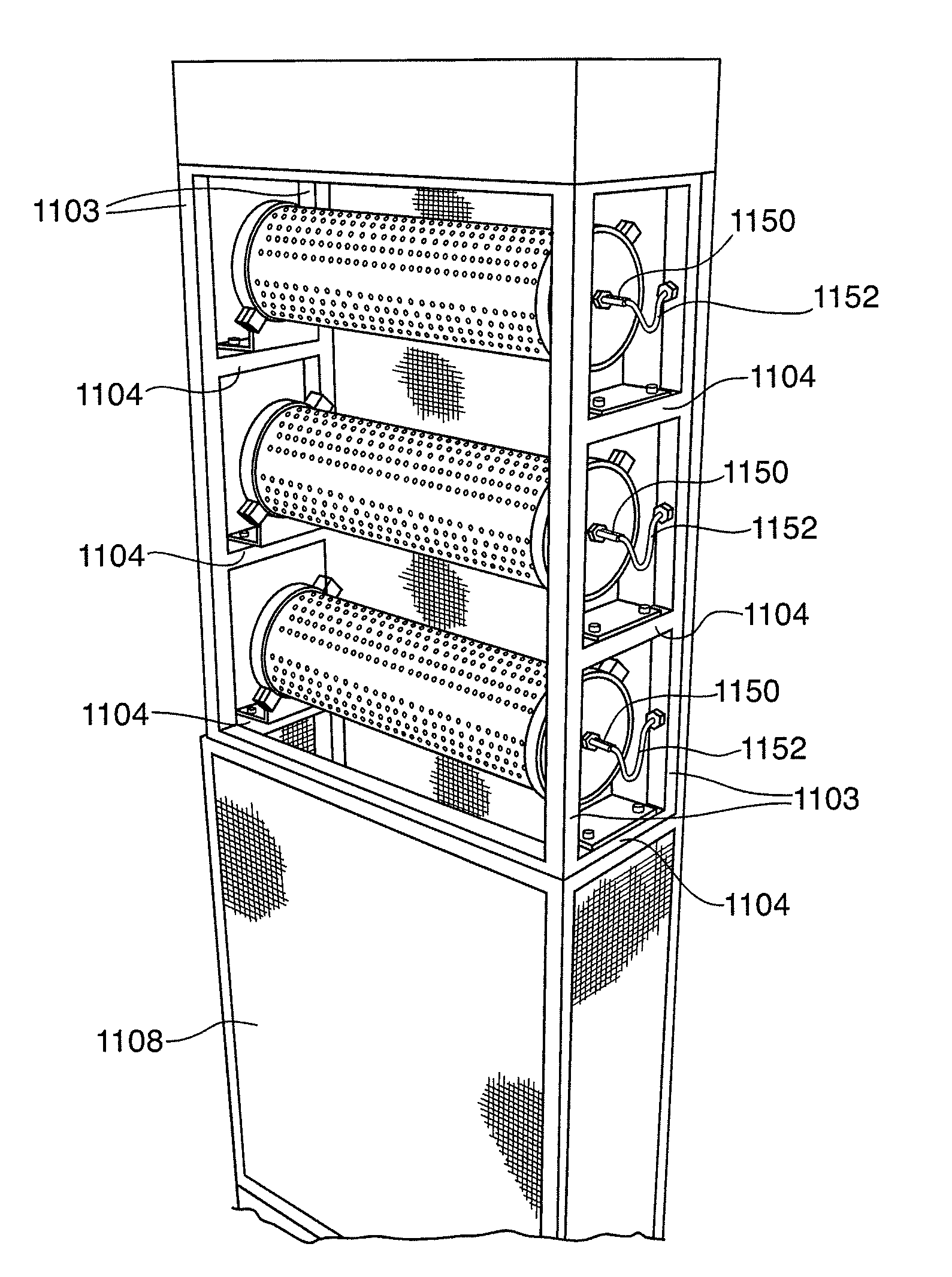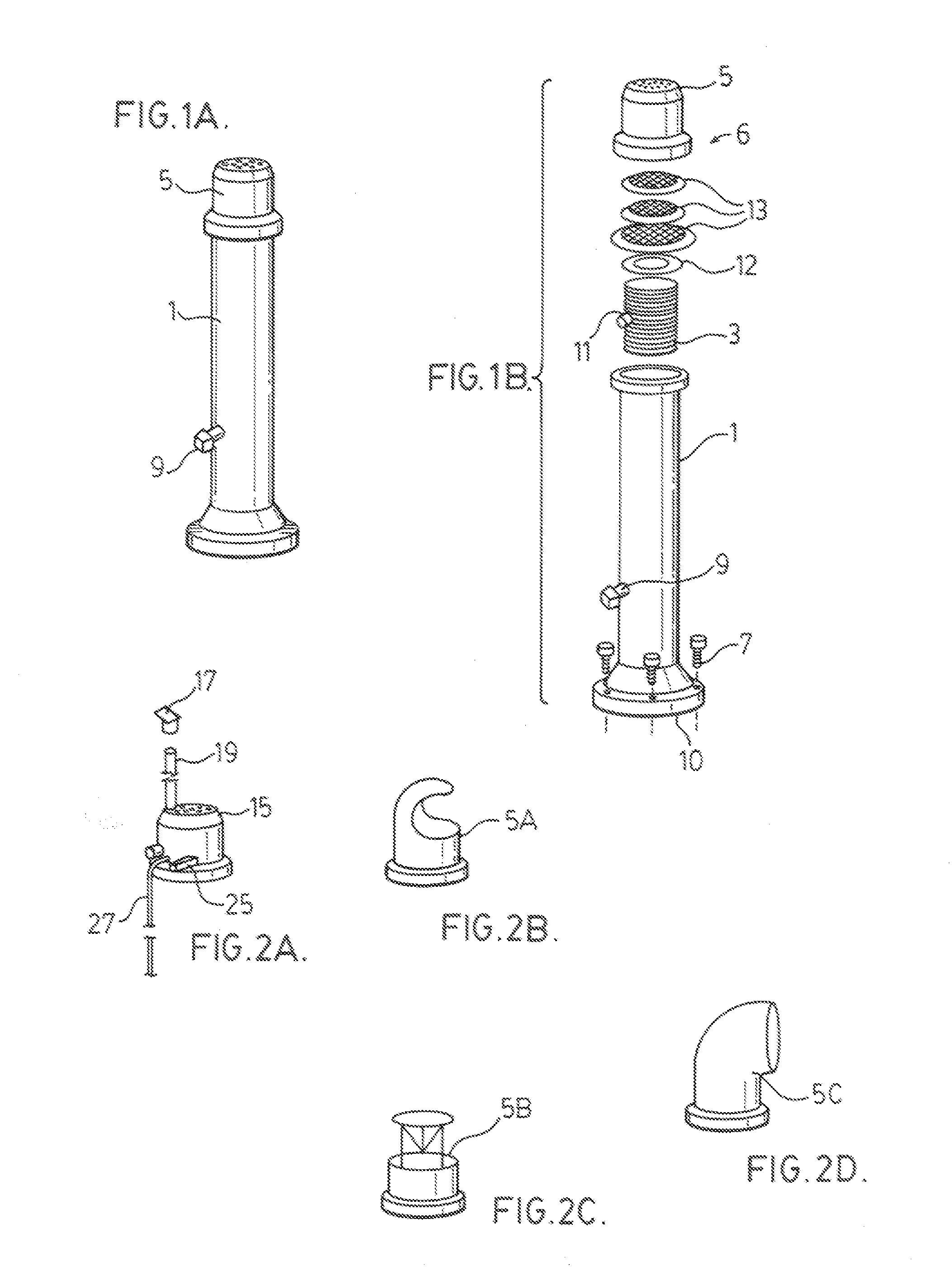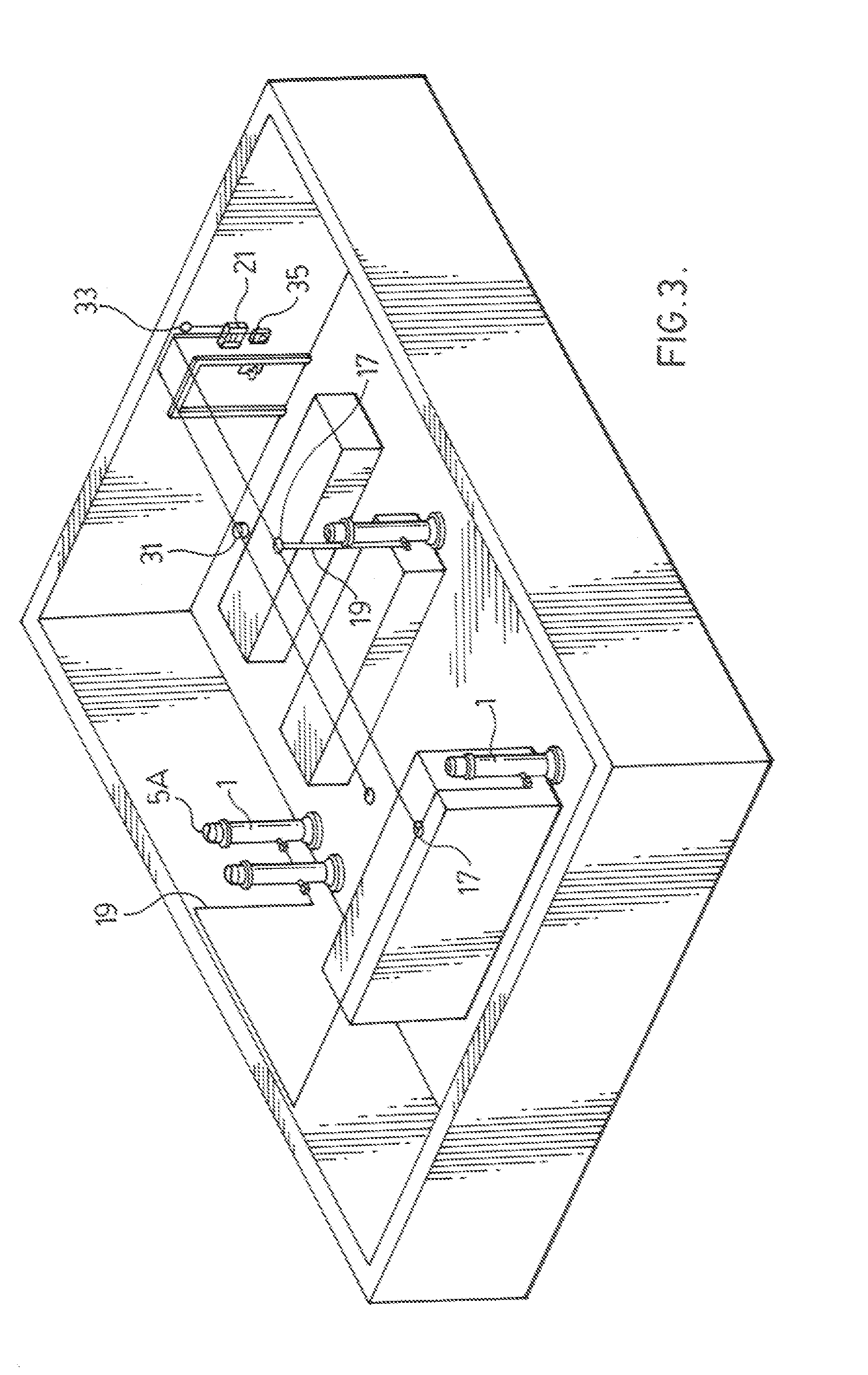System and method for sodium azide based suppression of fires
a sodium azide and fire suppression technology, applied in fire extinguishers, dental surgery, medical science, etc., can solve the problems of high-pressure bottles that require frequent inspection, water damage to the contents of occupied spaces, and require considerable up-front effort and expense, so as to reduce the heat of gas
- Summary
- Abstract
- Description
- Claims
- Application Information
AI Technical Summary
Benefits of technology
Problems solved by technology
Method used
Image
Examples
Embodiment Construction
[0100]A pre-packed solid gas generator for generating a gas mixture from a sodium azide-based chemical that is suitable for suppressing a fire is provided.
[0101]According to the preferred embodiment, a solid chemical mixture is provided that is predominantly sodium azide (about 80.3 percent by weight) and sulphur (19.7 percent by weight), as is disclosed in U.S. Pat. No. 3,741,585. Such mixture can generate approximately 60 pounds of nitrogen gas per cubic foot of solid propellant blend. It will be understood that other azide-based blends exist in the current art that satisfy this requirement.
[0102]As shown in FIGS. 1A and 1B, a gas generator fire suppression tower 1 is provided containing a pre-packed sodium azide-based solid propellant canister 3 and a discharge diffuser 5 for discharging generated gases. The tower 1 is secured in position by floor mounting bolts 7 passing through a mounting flange 10, or any other suitable means. The diffuser 5 is likewise secured to the tower 1 ...
PUM
 Login to View More
Login to View More Abstract
Description
Claims
Application Information
 Login to View More
Login to View More - R&D
- Intellectual Property
- Life Sciences
- Materials
- Tech Scout
- Unparalleled Data Quality
- Higher Quality Content
- 60% Fewer Hallucinations
Browse by: Latest US Patents, China's latest patents, Technical Efficacy Thesaurus, Application Domain, Technology Topic, Popular Technical Reports.
© 2025 PatSnap. All rights reserved.Legal|Privacy policy|Modern Slavery Act Transparency Statement|Sitemap|About US| Contact US: help@patsnap.com



